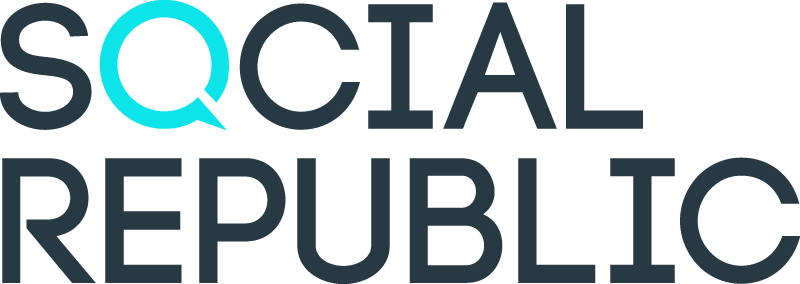The British Heart Foundation (BHF) is a charity organisation based in the UK.
It is the largest independent funder of cardiovascular research in the country, whose aim is to end heart and circulatory diseases.
Every year, the BHF funds over £100 million into research to look at the cause of diseases such as stroke, vascular dementia and diabetes.
The BHF raises awareness of the dangers of heart disease and cardiac arrest every year. This is usually done through various different fundraising methods, such as events, sponsorships and promotional content.
How the BHF used Twitter to raise awareness about cardiac arrest in the UK
With the growth of social media in the past decade, the BHF has also turned its attention to ways in which it can gather support online. One that stands out from the rest is their #RestartAHeart Twitter campaign, which was launched in 2016.
What is the #RestartAHeart social campaign?
In 2016, the BHF (@theBHF) launched their biggest social media campaign yet for their #RestartAHeart day. On this day every year, the charity takes to Twitter to promote and help users understand the need for essential CPR training. This is so they can increase the survival rate for sufferers immediately after cardiac arrest.
The BHF’s ultimate goal of the social campaign is to raise awareness of the issue, and drive conversation using the #RestartAHeart hashtag. The charity worked closely with social giant Twitter to use the platform’s ‘heart’ button creatively as part of the yearly campaign.
They raised awareness by using this call to action to drive engagement. Twitter’s auto-response feature prompted users to ‘like’ the BHF launch tweet to receive a response to whether they survived a heart attack.
Less than one in 10 people got a response of survival with the remaining nine in 10 learning that because nobody nearby knew CPR, they had not been so lucky. As a result of this launch tweet, there was a massive spike in conversation surrounding cardiac arrest and the lack of knowledge of CPR.
Since 2014, the BHF has continued to spread awareness of these issues by encouraging people to get involved with CPR training outside of social media. In 2018 alone, the #RestartAHeart Day trained over 230,00 people in the UK in life saving skills; a record-breaking number.
The success of the #RestartAHeart Twitter campaign
The 2016 Twitter campaign proved to be incredibly successful in driving conversation around heart disease and CPR.
There were more than 47,000 global mentions of #RestartAHeart across the space of a week, with more than 38,000 of these tweets from UK users. On top of this there were more than 7,300 mentions of CPR in the UK, and over 2,000 people further spread the conversation by retweeting their personalised response. Overall there were more than 26,000 total campaign likes.
“Being able to deliver a campaign that was so in line with core BHF messaging, but in a way that was cutting edge, gave us a chance to reach an entirely new audience. Not only did we see massive engagement on the day, but since the campaign launched we’ve had great feedback from the UK public,” said Jo Eden, the senior social media executive at the British Heart Foundation.
Why is the campaign so important?
In the UK, more than 30,000 people have a cardiac arrest (out-of-hospital) each year and less than one in ten survive. But, the chances of survival can more than double if somebody suffering a cardiac arrest is given CPR immediately after the heart-attack.
The #RestartAHeart campaign is designed to bring together not only social media users, but schools, charities, emergency services, and volunteers to teach CPR and defibrillation. There’s no denying that CPR is the difference between life and death for hundreds of people every year who suffer from cardiac arrests.
Campaigns like this are making a real difference. The charity says that they’ve seen improvements in bystander CPR rates since the first #RestartAHeart Day seven years ago.
Other ways in which the BHF is spreading awareness on social media
DeChox
In 2021, the BHF launched a 31 day challenge to run throughout March. Dechox is encouraging people to give up chocolate, a ‘Dexhox,’ and raise money for heart research. The charity is asking fundraisers what kind of ‘Dechoxer’ they are, by picking their level and joining chocoholics nationwide to tackle the world’s biggest killers:
- Chocoholic for Change
Chocoholics for change get those donations rolling in by giving up all things chocolatey for 31 days.
- Sweet-toothed Supporter
Sweet-toothed campaigners go the extra chomp for extra donations by giving up chocolate AND sweets.
- Leader of the Snack Pack
With unshakeable willpower, Leaders of the Snack Pack quit chocolate, sweets and fizzy drinks.
BHF has even set up an online Dechox Facebook group to give supporters an added boost. Here, fellow ‘Dechoxers’ can chat and and support each other as they embark on their month long challenge.
Utilising local voices online
Since they started using social media, The BHF has taken steps to empower hundreds of its individual shops, fundraisers and volunteers to create their social media content on Twitter for the charity. This is so the BHF can better utilise local Twitter accounts, in an effort to shine a light on the important research the charity is carrying out everyday.
An example of this local content in action came from a BHF shop in Dartford. In 2016 they managed to get comedian Joe Pasquale to announce the winner of a raffle they’d run. Through having a branded voice, the shop was able to directly tweet Pasquale, and the BHF was able to keep track of how many other celebrities the store was approaching.
—
What do you love about the BHF’s social media? Let us know in the comments on our post on Instagram or Facebook.

